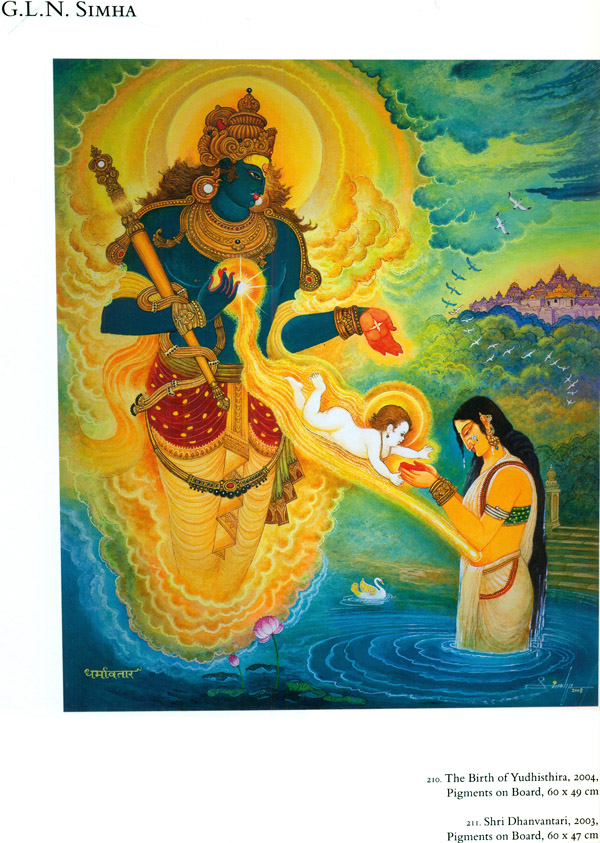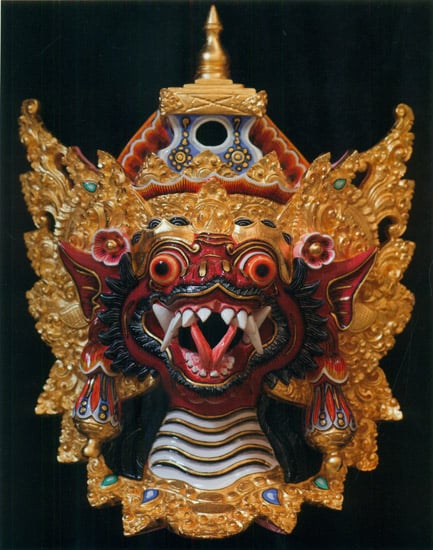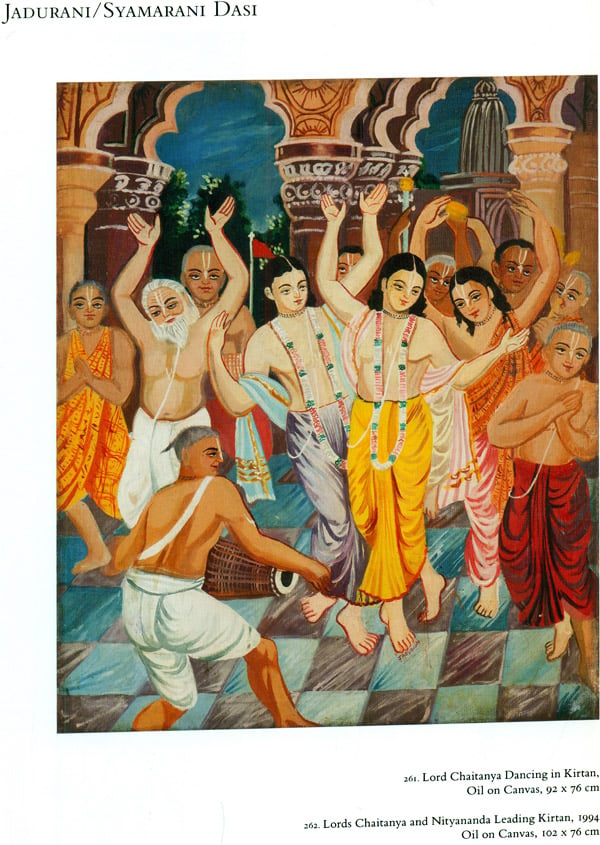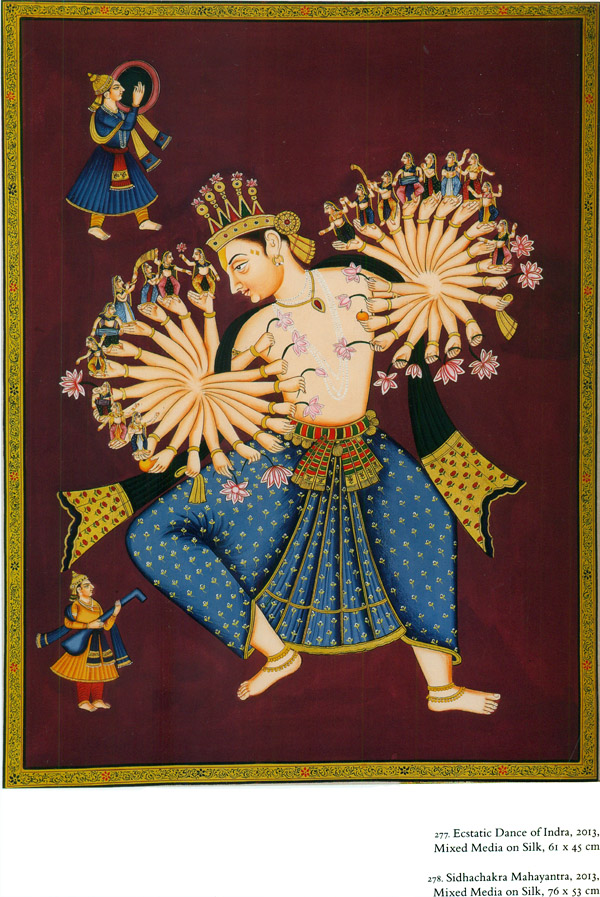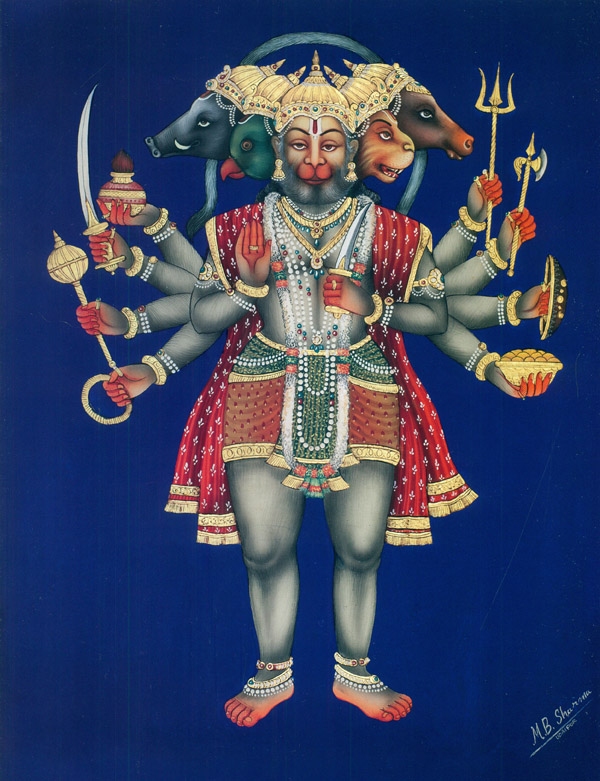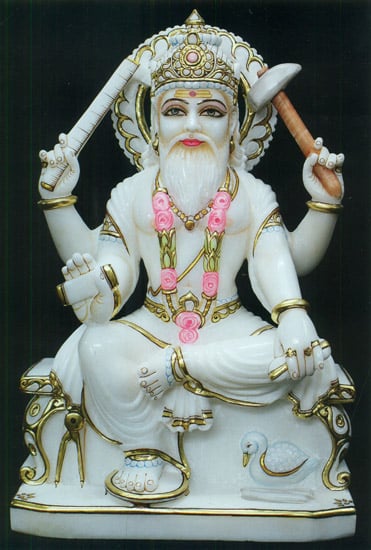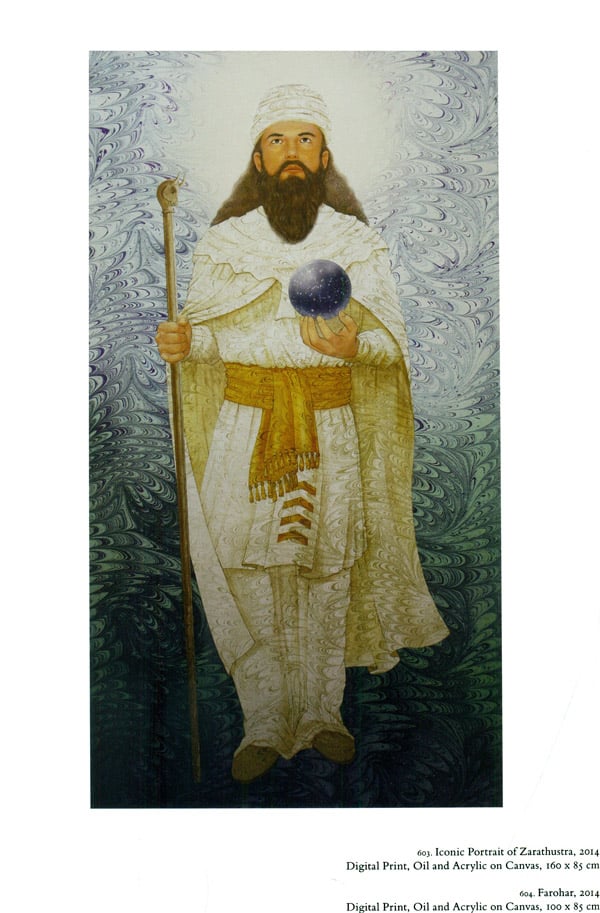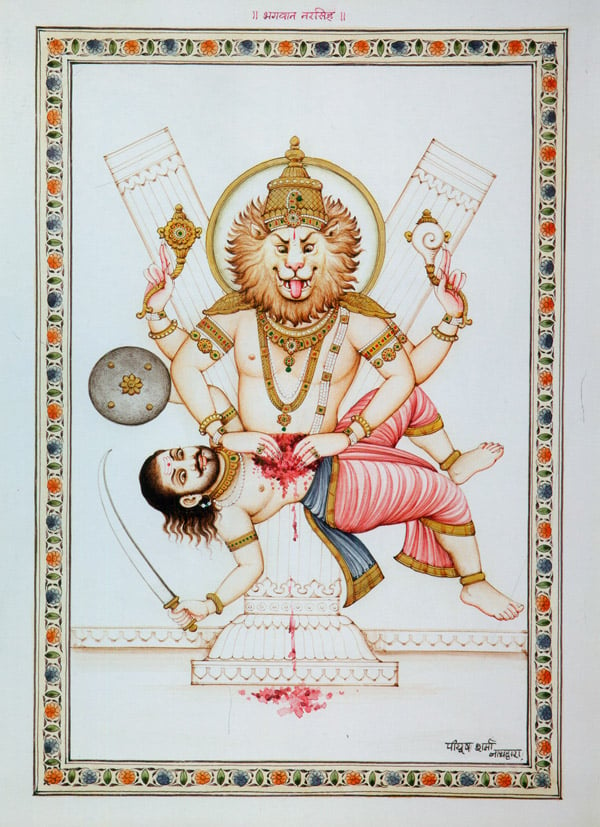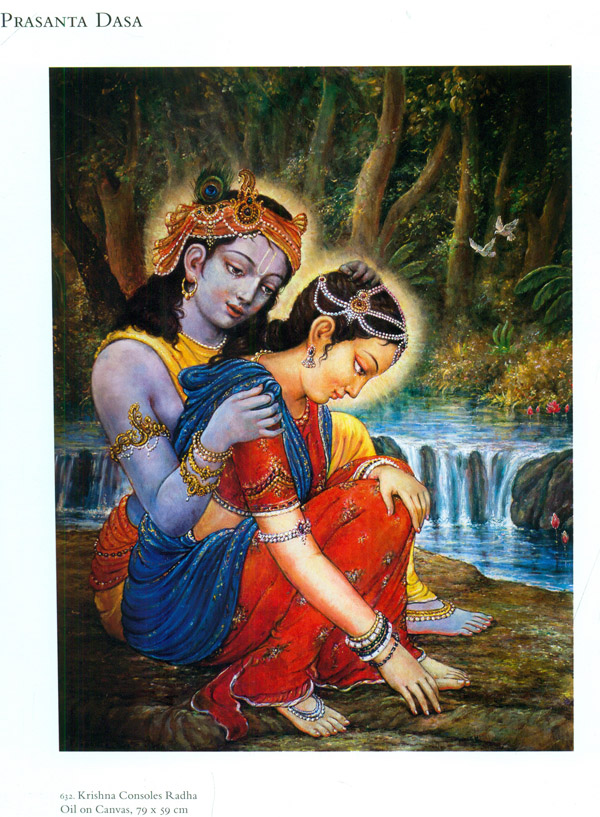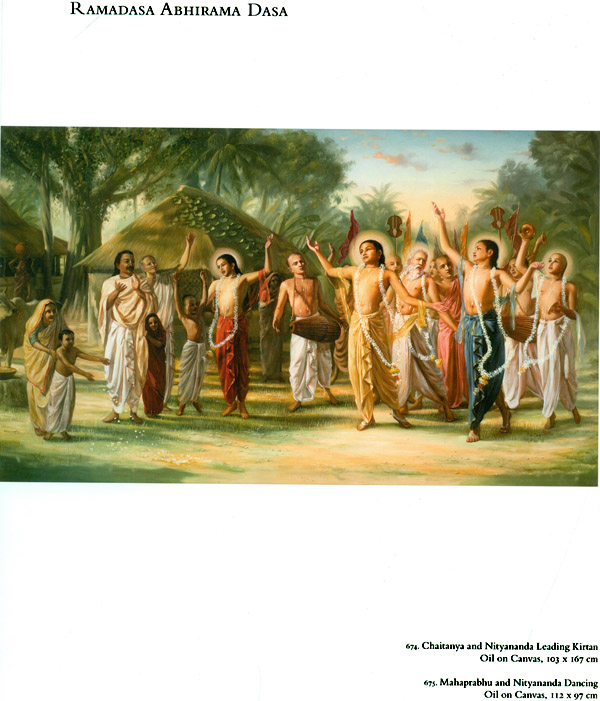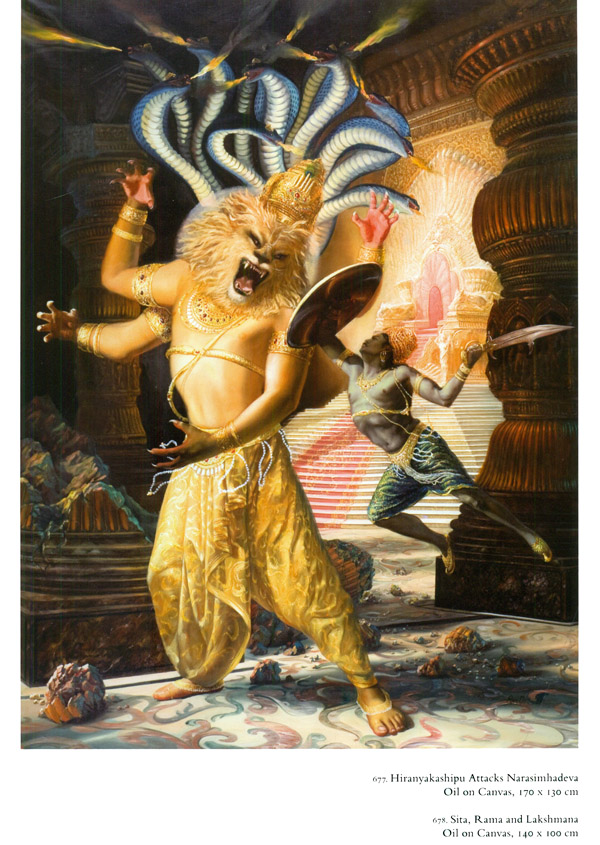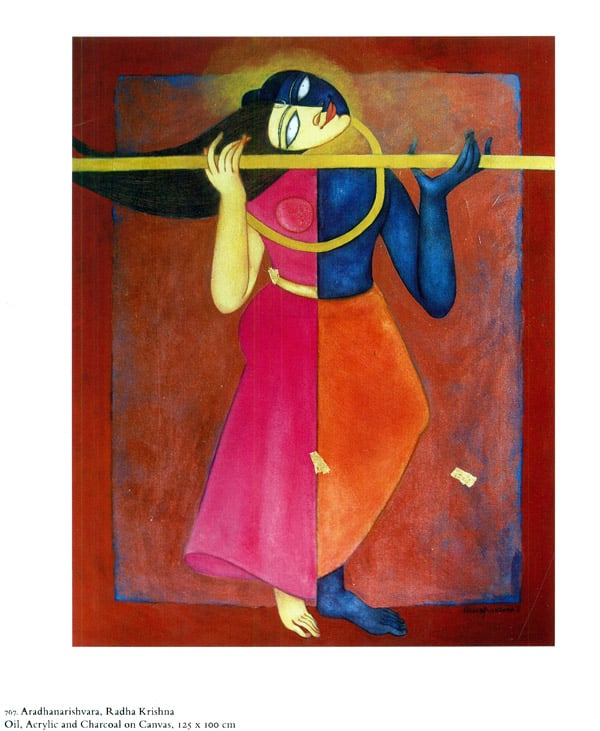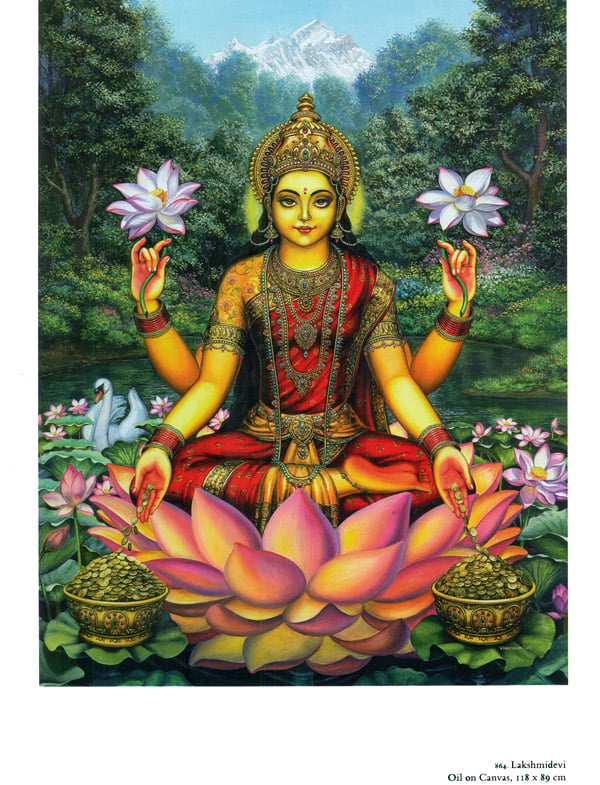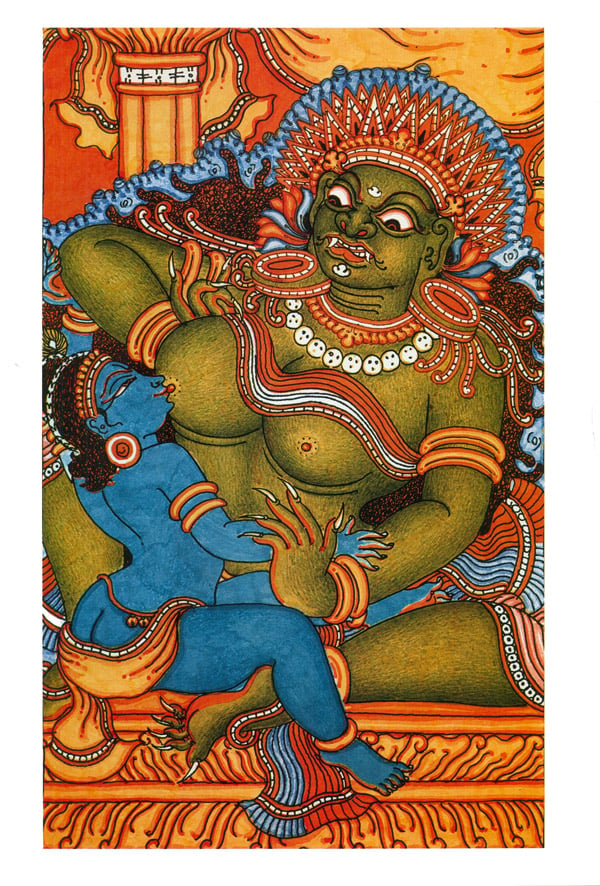
Forms of Devotion: The Spiritual in Indian Art (Set of 2 Volumes)
Book Specification
| Item Code: | NAK642 |
| Author: | Sushma K. Bahl |
| Publisher: | Niyogi Books |
| Language: | English |
| Edition: | 2015 |
| ISBN: | 9789383098828 |
| Pages: | 1135 (Throughout Color Illustrations) |
| Cover: | Hardcover |
| Other Details | 11.5 inch x 8.5 inch |
| Weight | 5.50 kg |
Book Description
About the Book
Forms of Devotion documents a substantive collection of Indian art in the spiritual genre and held in the Museum of Sacred Art.
The publication explores an inclusive spectrum of contemporary Indian creativity - classical inspired, tribal, folk and popular arts, reflective of the rootedness and innovation within traditions, as well as new media work in varied manifestations and genres. It features several especially commissioned works and seminal essays by Indian and international experts framed within the context of the history, philosophy and ideology of the culture, the art stems from.
The double volume book reflects the diversity and depth of Indian art from varied perspectives and aesthetics. It examines the connection between art and various spiritual ideologies and living traditions as they continue to be practiced and celebrated or questioned by hundreds of artists, from around and beyond the country, in a multi faith context.
The artists biographical sketches and their photographs, the bibliography and other reference material, make it a collectors' delight and a useful stand-alone resource book, first of its kind, on spiritual and devotional Indian art with its multilayered philosophical, mystical and cultural resonance. The book brings forth fresh insights on a subject of universal interest.
About the Author
Sushma K. Bahl, MBE, is the author of 5000 Years of Indian Art and former head of Arts & Culture for the British Council India. She is also an independent arts adviser, writer and curator and organizes festivals and cultural projects internationally. Sushma was involved with the Triennale-India (guest director), Bharat Rang Mahotsav (project consultant), Asian Art Biennale-Bangladesh (jury member) and ASEAN-India artists' residency & exhibition (curator). The art exhibition Ways of Seeing she curated won the IHC Art India Award.
Volume I
Foreword
In the long and rich philosophical and artistic heritage of India there has never been a sharp distinction between the spiritual and the secular. Art itself was based on the triple formula of sat yam (truth), shivam (auspiciousness) and sundaram (beauty). These three concepts until recently have dominated Indian art, particularly its sculpture. The spectacular figure of Shiva Nataraja-Lord of the Cosmic Dance-portrays with exquisite beauty and balance the kinetic aspect of the universe where all matter is in constant motion. In sharp contradiction, the serene image of the Buddha seated in silent meditation represents the quietistic side of our psyche. Between these two poles there is a whole spectrum of sacred Indian art, which represents a major contribution to world culture.
It is important to point out that the feminine in Indian art has always played a predominant role. Each goddess portrays various aspects of shakti, the basic power that lies behind the ever changing forms of creation. There is no distinction in sacred art between the masculine and the feminine. In fact, their union represents the blissful contact with the divine, especially in Buddhist tantric art and in the concept of Ardhanarishwara, half Shiva and half Shakti.
This splendid, richly illustrated two-volume set is published jointly by the Museum of Sacred Art (MOSA) in Belgium and Niyogi Books in India. It documents a sophisticated collection of Indian art in MOSA and features over a thousand recently created works including some hitherto unpublished and specially commissioned ones. The publication includes a number of seminal essays on Indian art by eminent scholars that explore the diversity and depth of Indian sacred art.
Recently, art seems to have moved away from beauty, and much contemporary art reflects the fragmentation of the human psyche that we are witnessing around us. A rediscovery of the sacred art of India, therefore, can help us regain a psychic balance so that we are once again able to absorb and appreciate the value and beauty of sacred art. The editor, Sushma K. Bahl, has done a remarkable job in bringing together the illustrations, reproduction and essays which, between them, make this two- volume set-Forms of Devotion: The Spiritual in Indian Art-an authoritative and seminal statement on the abiding beauty and inner significance of India's sacred art.
Contents
| Foreword | 7 |
| Spirituality and Culture: India's Gifts to the World | 9 |
| Acknowledgements | 15 |
| Essays | 19 |
| Adi Anadi Anant: Continuum | 45 |
| Abodes of Devotion | 57 |
| Imaging Devotional Theologies | 75 |
| Devotion in Art, Craft and Textiles | 89 |
| Popular Expressions of Devotion | 105 |
| Collection A to M | 515 |
| Artists | 536 |
| Glossary | 550 |
| Bibliography | 557 |
| Index | |
Volume II
Foreword
The interdependence of art and life has evolved in a continuum of varied meditational and spiritually uplifting creative forms, as practised in India since ancient times. There is the indigenous iconic form in stone and bronze of Nataraja (king of dance) on one hand and the divine meditative representation of Buddha in Abhayamudra (dispelling fear) as paintings and sculptures on the other. The amazing diversity of Buddhist art that one sees flourishing in the world today, originated around the fifth century BC in the Indian subcontinent. Inspired by the sacred epics, Hindu and Buddhist art spread and evolved as it travelled from North India through Central Asia into Eastern Asia and Southeast Asia and subsequently in the West.
Spiritual art in two and three-dimensional symbols and forms as represented in Hindu, Buddhist, Tibetan and other religions, continues this link with ritual and meditation. Nobody sets hands to it who has not attuned himself to the divine worlds that he wants to represent, according to traditional symbols. Na adevo devam acaryet (one should worship after becoming divinised).The image does not spring from fancy, but accords to carefully laid out prescriptions of proportions, attributes, colours and the chanting of mantras. It is the abode of a deity, inhabiting the liturgic force.
The depths and diversity of devotional and spiritual ideas and beliefs that inspire the arts are manifested in the cultural heritage of the subcontinent. Tantras developed from the mysterious orgies of the dark jungles of India to the ideal form as the logos (Dharma-kaya) as perceptible perfection (sambhoga-kaya) and as the phenomenal body (nirmana-kaya). In the amorous embrace of the deities, the serene and terrifying aspects are to combat and overcome the forces of evil. It is the oneness of the mind of the universe and of the divine in the living non-duality of the best and the noblest. The body itself is a divine mansion (mandala).
Some of these concepts are elaborated in this publication. It presents a comprehensive overview of the vast and diverse panorama of sacred Indian art. I compliment the publishers and editor in bringing out this beautifully illustrated and authored book. It makes a useful reference book and an engaging documentation of the country's rich traditions across art forms and faiths, a subject of immense interest in the world today. My best wishes to the team and the publication.
Contents
| Foreword | 7 |
| Essays | 9 |
| Dashavatara: The Ten Incarnations of Vishnu | 27 |
| Archetypal Imagery in Neo- Tantric Painting | 45 |
| Syncretic Culture and Islam | 57 |
| Vernacular Art: Work, Leisure and Devotion in Rurban India | 69 |
| Methods and Materials of Traditional Painting | 81 |
| Iti-iti: Multiple Contemporaries in Sacred Indian Art | 109 |
| Collection N to Z | 533 |
| Artists | 558 |
| Cartographic Overview: Select Devotional Art and Cultural Centres in India | 560 |
| Credits | 564 |
| Index | |
